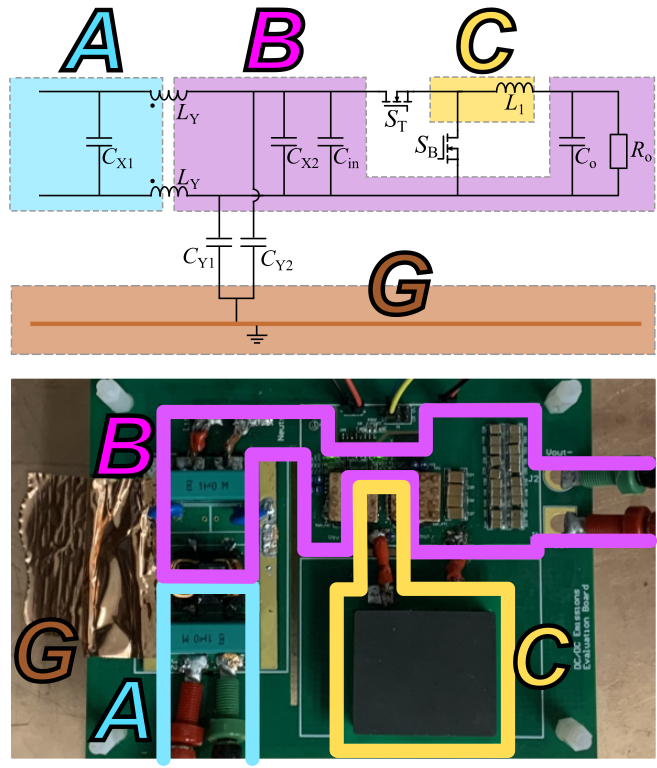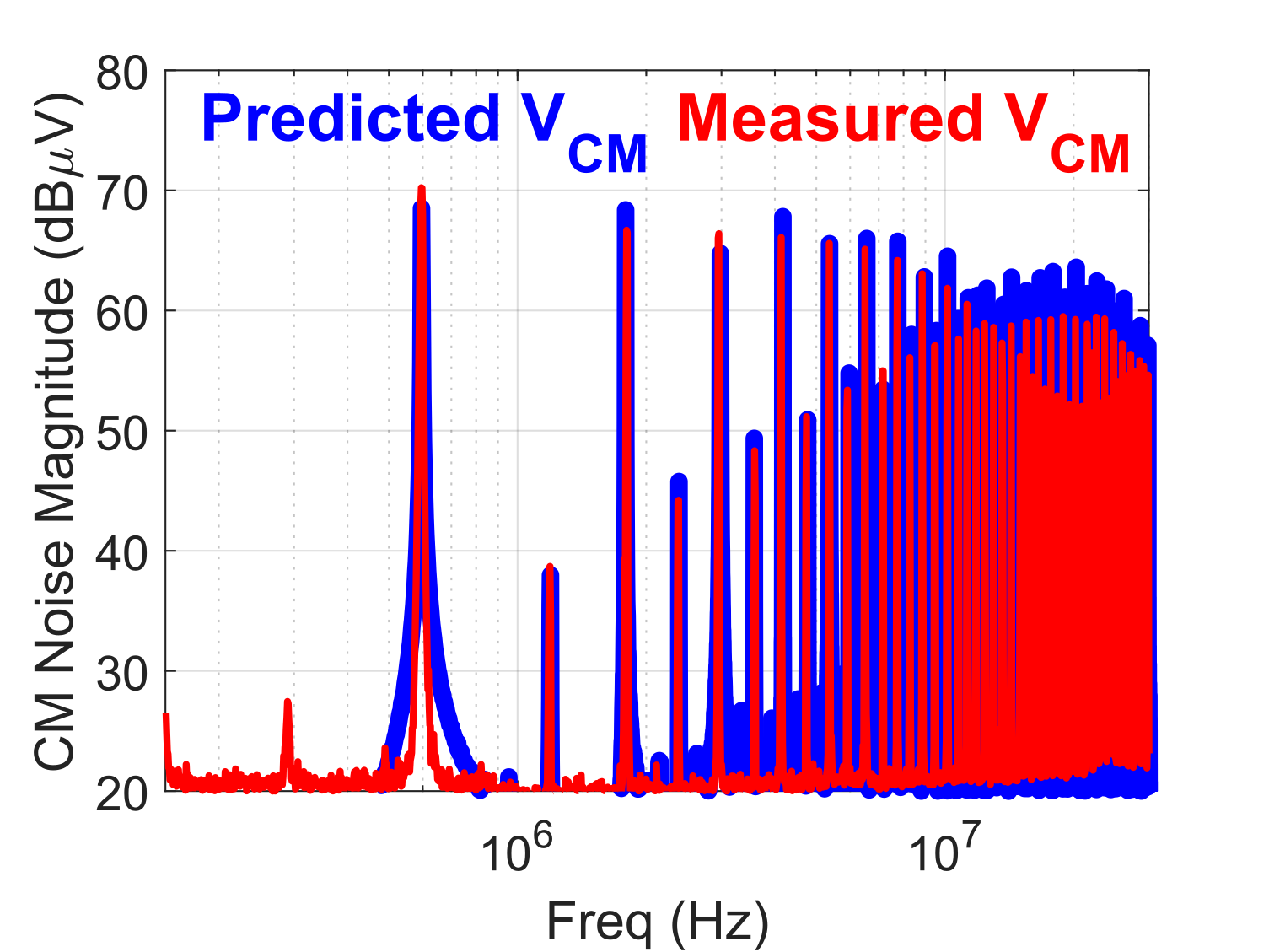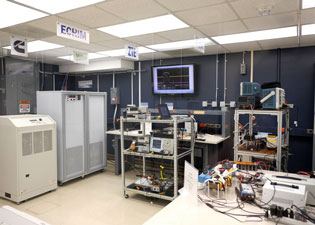LIBRARY
Reduction of CM Noise by Minimizing Near-Field Effects in a DC/DC Converter

This work evaluates the effects of near-field couplings on common-mode (CM) noise in a buck converter with EMI filter (Fig. 1). First, it is demonstrated how near-field couplings between the power stage and the EMI filter greatly increase conducted CM noise. EMI tests with different shielding materials indicate that this noise is due to capacitive (electric field) couplings. An automated robotic system is used to map out the converter's electric field, and these measurements also indicate a capacitive coupling mechanism between the power stage and the EMI filter.
To understand how near electric field couplings affect CM noise, a CM model is developed, which includes the effects of parasitic capacitances within the system. The values of these capacitive couplings are measured in the real hardware, and two capacitances are identified as critical in determining the CM EMI. The model is used to accurately predict the conducted CM noise spectrum both with and without coupling between the power stage and the EMI filter. Fig. 2 shows the predicted and measured CM noise with this coupling.
Several shielding techniques are demonstrated to reduce CM noise in a manner consistent with the model. It is explained why shielding the power stage inductor to neutral reduces CM noise more than shielding the inductor to ground. These shielding approaches achieve CM noise reduction of up to 40 dBuV.
In summary, this paper presents an approach for analytically modeling the effect of parasitic capacitive couplings on CM noise within a dc-dc converter with EMI filter. This model accurately predicts the conducted CM noise spectrum and explains the effectiveness of various shielding techniques for reducing CM noise.























































































